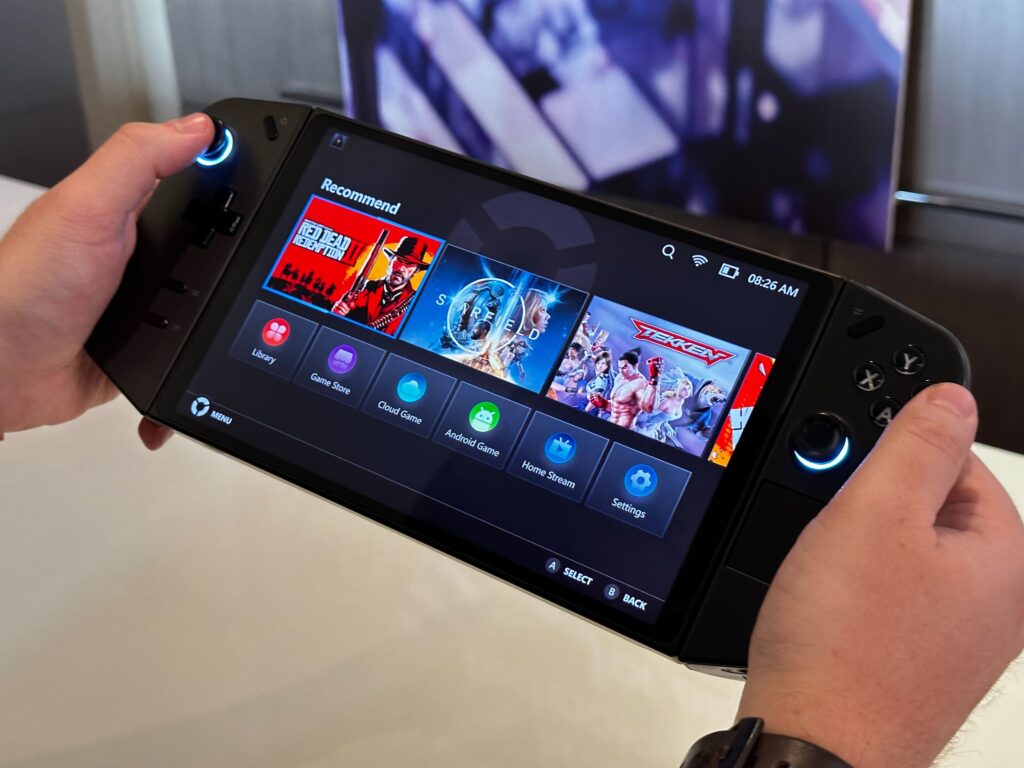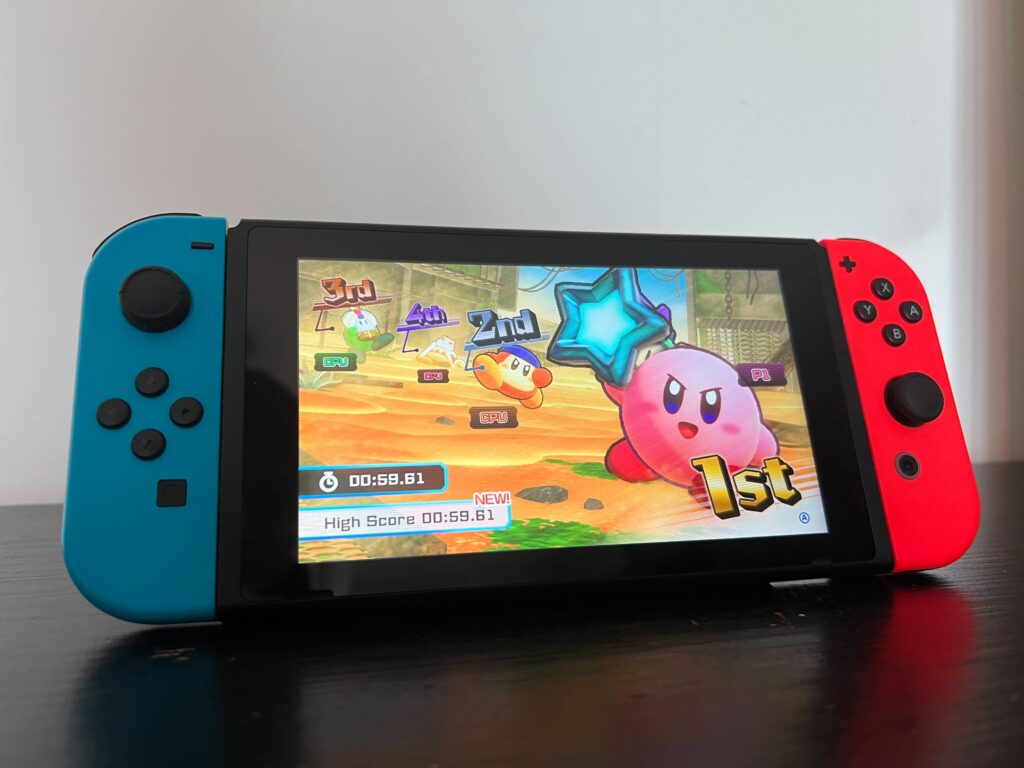Lenovo has finally decided to throw its hat into the handheld console ring with the announcement of the Lenovo Legion Go.
With even more options to choose from, we wanted to take a closer look at some of the most popular handhelds on the market to figure out which ones are worth your time. Keep reading to find out all the key differences between the Lenovo Legion Go and Nintendo Switch.
Quad HD+ vs Full HD
The vanilla Nintendo Switch model comes with a simple 6.2-inch LCD screen with a 1280×720 resolution. The resolution can be boosted to Full HD (1080p) when docked to a TV or monitor, allowing for a more immersive experience. It comes with a 60Hz refresh rate – both in handheld mode and while docked – which helps to keep the battery from draining too quickly, but can make some animations look a little stilted.
The Switch OLED is the better option if you’re after more vibrancy and detail while you play, but we noted that the low resolution doesn’t have a massive impact on the game quality since the screen is already so small.
Lenovo has decked out the Legion Go with an 8.8-inch Quad HD+ (2560×1600) IPS display. From our short time with the Legion Go, we noted that the colours looked appropriately accurate and rich, with a lot more detail than an FHD display. It also boasts a 144Hz and 60Hz refresh rate, allowing you to pick between a premium experience and the chance to save battery.
The larger screen didn’t feel overly imposing during play time and should allow for a more immersive experience compared to the relatively tiny 6.2-inch Switch.

The Legion Go runs on Windows 11
The Lenovo Legion is yet another Windows 11 handheld, in the same vein as the Asus ROG Ally. The inclusion of Windows 11 will be polarising, but we found that you can avoid spending too much time in Windows by taking advantage of the Legion Space software. This brings together your locally installed games from various stores for quick access and was easy to navigate during our test period.
The Nintendo Switch runs on a Proprietary OS, a derivative of the Nintendo 3DS system software. The Switch is unique in the sense that it doesn’t offer any features past gaming, with no option to download third-party apps like Netflix, Disney Plus or even YouTube. If you’re looking for a pure gaming experience with no add-ons, then the Switch may be more alluring, but the Legion Go could be the better option if you’re hoping to browse the web or stream video content.
AMD Ryzen Z1 Extreme vs Nvidia Tegra X1
The Nintendo Switch runs on a Nvidia Custom Tegra processor. The performance of the Switch is not groundbreaking – especially when compared to newer handhelds like the Steam Deck – but it is more than capable of running games with minimal lag. The loading times can be a little arduous, but due to the overall focus on gaming, it offers a reliable performance overall. It does however restrict which games can be ported over to the Switch.
The Lenovo Legion Go, meanwhile, comes with up to an AMD Ryzen Z1 Extreme processor alongside AMD RNDA Graphics. Until we get this model in for a full review we can’t make any claims on how it will handle triple-A titles, but it’s likely that it will pack a lot more power than its Nintendo rival. There were no noticeable hiccups during our test period, but were not able to try out any high FPS performance titles.

Different game selections on each device
Nintendo is known for being a fairly insular developer, with almost all of the company’s games only being playable on Nintendo platforms. The Nintendo eShop does feature a plethora of third-party titles – including The Witcher 3: Wild Hunt, Diablo 3: Eternal Collection and The Elder Scrolls 5: Skyrim – but you will most likely be indulging in first-party exclusives directly from Nintendo.
The Lenovo Legion Go works in a similar way to other handheld PCs, allowing users to access various game stores. This should allow for a wider selection of games to be available on the Legion Go, with the all-new Legion Space making it easier to navigate your collection. Users will also be treated to a three-month Xbox Game Pass Ultimate membership which will grant access to hundreds of popular games, including Minecraft, Forza Horizon 5 and Halo Infinite.
Overall, if you’re looking for a wider game selection then the Legion Go is definitely the go-to option. But if you’re yearning to play the latest Legend of Zelda: Tears of the Kingdom or jump into a game of Mario Kart 8 Deluxe, the Switch is the better alternative.
The Nintendo Switch is more affordable
With all of that said you may be wondering which handheld console is the most affordable option. The Nintendo Switch costs £259.99/$299/€299 and can be found in various bundles from both Nintendo and third-party sites.
Due to its larger screen and powerful internals, the Lenovo Legion Go is a lot more expensive in comparison, with a starting price of £699/$699/€799.




